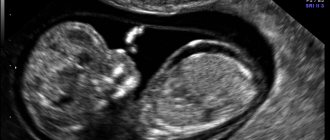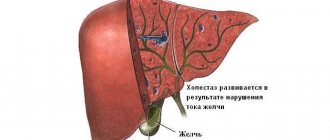How does labor begin?
Many expectant mothers, having barely learned about their interesting situation, begin to think about what childbirth is and how everything happens during this process.
From a medical point of view, childbirth is the process of expulsion of the fetus from the uterus.
In order for this process to be carried out safely, it is necessary that the organisms of the mother and child are fully prepared.
Preparation for childbirth begins long before it actually begins.
The hormonal levels in a woman’s body change significantly, which becomes a kind of signal of readiness for the birth of a child.
About a month before the expected date of birth, a woman encounters so-called precursors.
These are special conditions that signal that the body has begun preparation.
Harbingers of childbirth
The first signals about an imminent meeting with the child appear approximately 4 weeks before his birth.
The main harbingers of an early birth:
- Abdominal prolapse
This phenomenon is usually observed 2 weeks before the onset of labor.
It is due to the fact that the baby's head enters the mother's pelvis. Due to this, the diaphragm lowers and the stomach changes its position.
- Removal of the mucus plug
The time when this phenomenon can occur varies.
The plug has the appearance of a mucous discharge with blood streaks.
For some, it goes away 10 days before giving birth. Sometimes the plug comes off immediately during childbirth.
- Cleansing the body
A few days before giving birth, a woman activates processes aimed at natural cleansing of the body.
Urination and stool become more frequent, during which the woman loses several kg of weight.
- Training contractions.
These are pulling sensations of a girdle nature in the abdomen and lower back.
They are not painful and occur about 3 weeks before the onset of labor.
Diagnostics
Primary weakness of labor is diagnosed based on:
- decreased activity of the uterus (contractions weaken and become rare);
- reducing the rate of smoothing of the cervix and opening of the uterine pharynx;
- prolonged standing of the presenting part of the fetus at the entrance to the pelvis;
- increasing the time of birth.
The diagnosis is also made on the basis of partogram data if there is no dynamics of cervical dilatation within two hours.
Partogram is a description of childbirth in a graphical way, which displays data on cervical dilatation, fetal advancement, pulse, blood pressure, fetal heartbeat, state of amniotic fluid, contractions, etc.
Secondary labor weakness is diagnosed based on the clinical picture and partogram data. In addition, it is necessary to monitor the condition of the fetus (listen to the heartbeat, install a CTG sensor), as there is a risk of developing hypoxia. After making a diagnosis, obstetricians need to decide on the tactics of labor management.
Weakness of labor must be distinguished from the following pathologies:
- pathological preliminary period (random false contractions with an immature cervix);
- discoordinated labor activity (impaired contractile activity of the uterus, manifests itself extremely painfully; occurs very rarely);
- clinically narrow pelvis (discrepancy between the sizes of the pelvis and the fetal head).
When does labor begin?
The expected date of birth does not always coincide with the actual day of birth of the child.
Some give birth exactly on time, some earlier, and some much later than the set date. Consequently, the question arises: “What determines the onset of labor?”
The duration of bearing a child is individual for each woman and depends on the length of her menstrual cycle.
- If the cycle is 21 days, then there is a high probability of having a baby at 38 weeks of pregnancy;
- If there are more than 30 days between periods and the cycle is long, then the woman will most likely give birth at about 42 weeks.
The normal period for the birth of a child is considered to be 40 weeks.
From 37 weeks, babies are considered full-term, but there is no need to rush into their birth.
During this period, the active formation and maturation of the child’s lungs still occurs.
A pregnancy period of more than 40 weeks is considered pathological and requires medical supervision.
If the pregnancy proceeds without complications and the child feels well, then doctors will not interfere. However, as a result of transplantation, the risk of intrauterine infection of the fetus increases due to the passage of original feces.
In modern obstetric practice, a pregnancy period of up to 42 weeks is considered normal, and beyond that requires stimulation of labor.
Treatment and delivery of weak labor
There are several methods of medical care. The doctor makes a decision depending on the causes of the pathology and the condition of the mother and fetus. If labor is prolonged and becomes life-threatening, labor is induced or an emergency caesarean section is performed. Methods of medical care:
1. Stimulation of labor without medications. Labor can be enhanced by the amniotomy procedure (opening of the amniotic sac), which eliminates the use of medications. Don't be scared; amniotomy is completely painless.
2. Drug stimulation. Performed in case of ineffective amniotomy. It can be carried out with the help of strong analgesics that induce medicated sleep to relax and rest the woman in labor. Stimulation with oxytocin and prostaglandins is performed intravenously.
3. Caesarean section. Emergency surgery is performed if stimulation is ineffective and if there is a threat to the life of the woman in labor or the fetus.
Medication-induced sleep
For therapeutic sleep, sodium hydroxybutyrate and glucose are administered and performed by an anesthesiologist. In its absence, the obstetrician administers promedol, relanium, atropine and diphenhydramine. Medication-induced sleep allows a woman in labor to rest for 2-3 hours and gain strength, and also helps to intensify contractions. If there are indications for an emergency cesarean section, then there is no need for therapeutic sleep.
After the woman has rested, the doctor needs to assess her condition and the fetus, as well as the degree of dilatation of the uterine pharynx. After which a hormonal-energy background is created with the help of:
- ATP, riboxin, cocarboxylase;
- 40% glucose solution;
- calcium supplements (to enhance uterine contractions);
- vitamins: B1, B6, E, ascorbic acid;
- piracetam (to improve uterine circulation).
Amniotomy
Opening the membranes promotes the production of prostaglandins, which stimulate contractions. It is performed when the cervix is dilated by 3-4 cm. 2-3 hours after the procedure, the doctor needs to assess the state of the dynamics of cervical dilatation, and also decide on the use of contraction drugs.
Drug stimulation
When stimulated with drugs, oxytocin and prostaglandins are used.
Oxytocin is administered intravenously through a drip. It provokes increased contractions and the production of prostaglandins. Oxytocin is administered when the uterine pharynx is dilated by 5–6 cm or more, only after amniotomy or spontaneous discharge of amniotic fluid.
Prostaglandin E2 contributes to the development of normal contractions. The drug also accelerates the ripening of the cervix and its dilatation, without disturbing the uteroplacental circulation. The drug is administered similarly to oxytocin. It is used until the uterine os is dilated by 2-3 cm in case of an insufficiently mature cervix.
Prostaglandin F2a (enzaprost or dinoprost) is used when the uterine pharynx is dilated by 5 cm or more. Effects of the drug: stimulation of contractions, constriction of blood vessels, increased blood clotting. Therefore, it is contraindicated for gestosis and blood diseases. Prostaglandin F2a is administered intravenously using a drip system.
With drug stimulation, it is mandatory to prevent fetal hypoxia every 3 hours. To do this, a 40% glucose solution + ascorbic acid + aminophylline, sigetin or cocarboxylase is injected intravenously. Inhalation of humidified air is also indicated.
C-section
If all of the above methods are ineffective or there are additional indications, then a cesarean section is performed.
Contraindications to labor stimulation
- narrow pelvis (anatomical and clinical);
- presence of a scar on the uterus;
- women with a history of more than 5-6 births;
- incorrect position and presentation of the fetus;
- life threatening for the mother and fetus.
Options for starting labor
The beginning of the labor process is somewhat different for women who will become mothers for the first time and for multiparous women.
How labor begins in first-time mothers
- Beginning of regular contracting activity;
- Leakage of amniotic fluid.
A contraction is a contraction of the smooth muscles of the uterus, which causes the cervix to dilate.
For women who are experiencing childbirth for the first time, it is very difficult to distinguish false contractions from real ones.
Therefore, it is necessary to know their symptoms:
- Contractions occur regularly, after approximately the same period of time;
- Contractions are accompanied by pain;
- The pain of contractions increases with their frequency;
- The time interval between contractions is reduced.
The release of water does not always occur before the actual expulsion of the fetus from the uterus. Sometimes it is necessary to puncture the bubble with a special needle.
This procedure is performed by gynecologists in the perinatal center. It's painless.
Reasons why contractions begin
Before childbirth, physiological changes occur in the mother's hormonal system.
Approximately 24 hours before the onset of labor, active production of actomyosin begins.
This substance plays a direct role in the ability of the uterus to contract.
At the same time, the pituitary gland and placenta begin to actively produce special hormones - oxytocin and prostaglandin.
These substances trigger the process of contraction of the muscles of the uterus.
How does labor begin in multiparous women?
In multiparous women, labor begins similarly, but is characterized by the transience of each phase.
Therefore, while women who are giving birth for the first time may not be in too much of a hurry to go to the maternity hospital, it is better for experienced mothers not to postpone this visit.
The duration of labor for primiparous women is on average 12 hours; multiparous women give birth in 8-10 hours. However, this time is conditional and the birth process is individual for each woman.
In many ways, the duration of labor depends on the strength of labor, the structure of the pelvis and the size of the child.
The birth of a child is a highly anticipated moment for every woman. Every mother is afraid to miss its beginning.
Nature has programmed the female body in such a way that even a primigravida woman can accurately determine that it is time to go to the maternity hospital.
Proper physical and mental preparation will help you successfully give birth to a long-awaited baby.
Causes
Pregnant women who have a history of:
- childhood infections (rubella, chickenpox, measles);
- late onset of the first menstruation (menarche), after 15-16 years;
- menstrual irregularities;
- infantilism (small uterus);
- abnormalities of the uterus;
- inflammatory diseases of the reproductive system;
- a scar on the uterus (after a cesarean section, removal of fibroids, ectopic pregnancy, etc.);
- abortions;
- large fruit;
- a large number of births;
- uterine fibroids;
- diseases with metabolic disorders.
The reason for the weakness of the labor process can be mechanical obstacles (narrow pelvis, breech presentation of the fetus, inelasticity of the cervix). The age of the pregnant woman also plays a role - women under 17 and over 30 years of age are more susceptible to labor anomalies. Obstetric causes include:
- prenatal rupture of water;
- polyhydramnios,
- multiple births;
- post-term pregnancy or, conversely, premature birth;
- large size of the fruit;
- placenta previa;
- transverse or oblique position of the fetus;
- breech presentation of the fetus;
- fear of childbirth, great loss of strength.
The reasons may also be from the fetus:
- intrauterine infection;
- malformations and anomalies of development;
- Rhesus conflict;
- fetoplacental insufficiency.
Most often, the development of weak labor requires several reasons or a combination of them.











